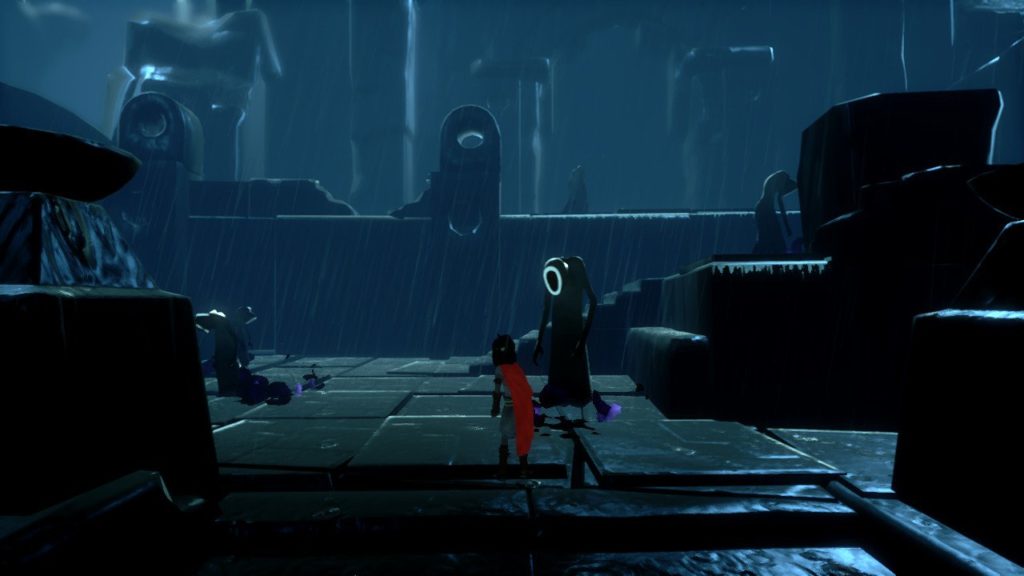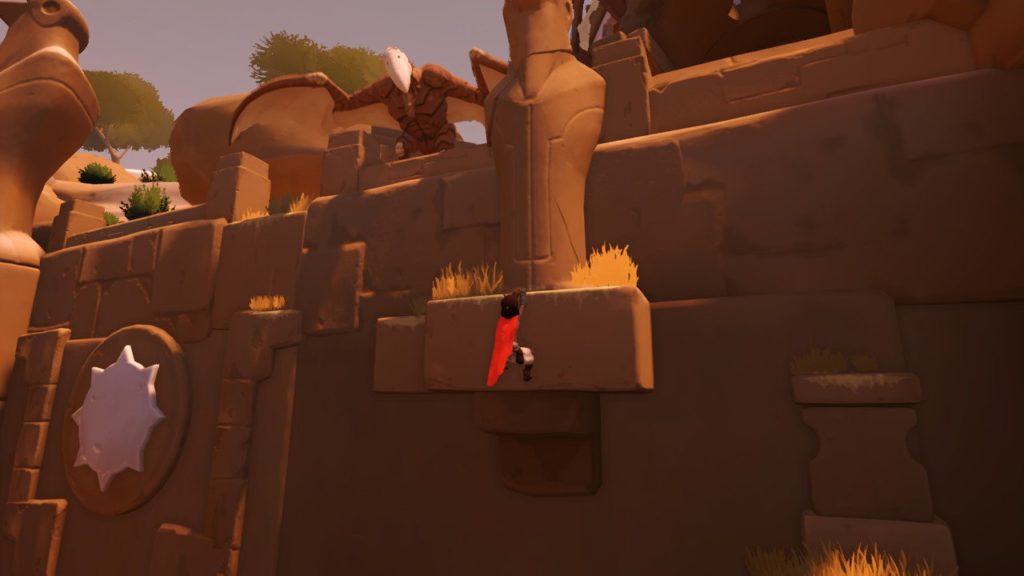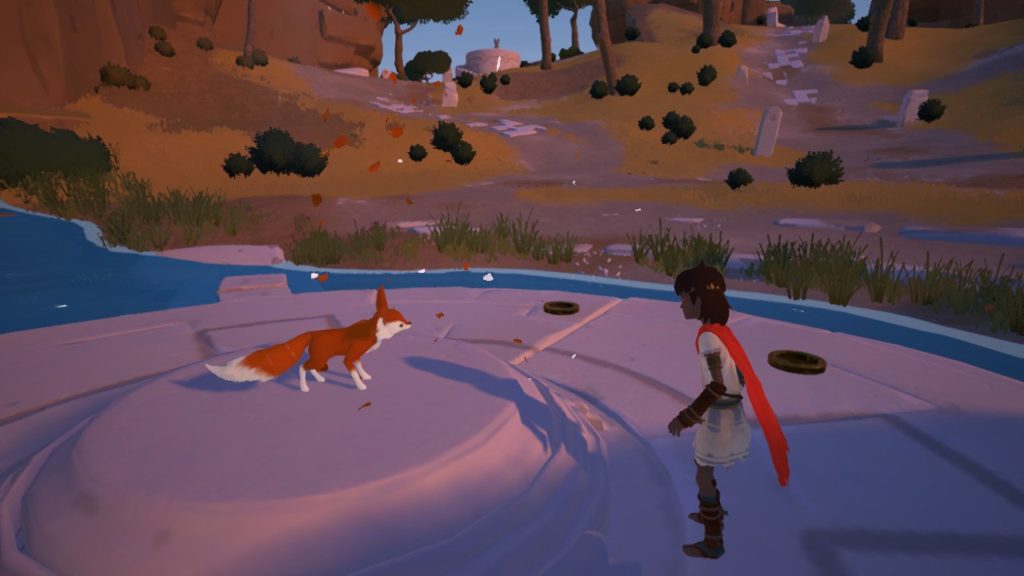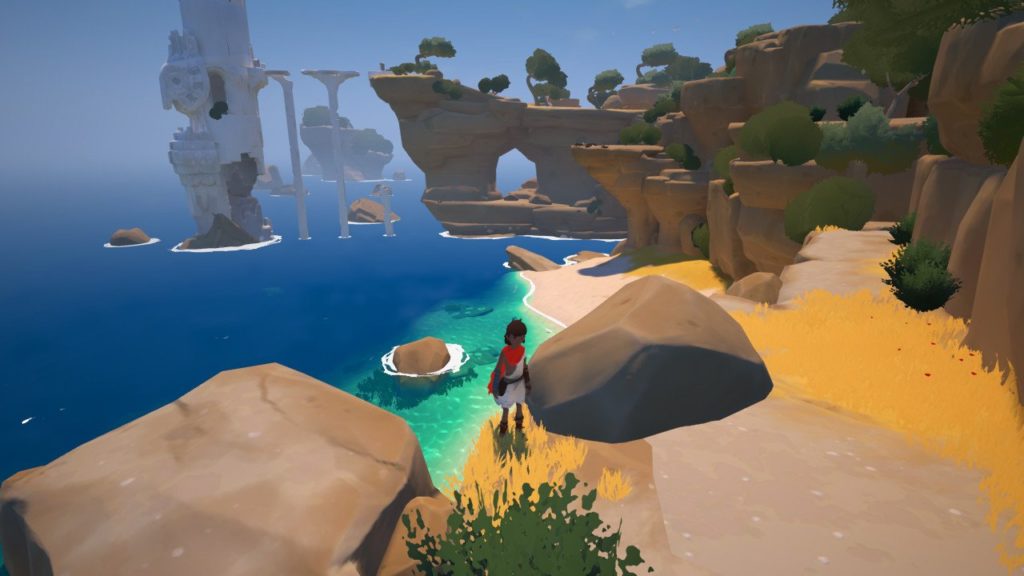- Genre: Adventure/Puzzle
- Platform: Switch
- Also Available On: PS4, Xbox One, Windows
TL;DR
- Light puzzle-based gameplay feels like it aspires to be Ico/Journey, even if it doesn’t quite reach those heights
- Fantastically good soundtrack and beautiful visual style
- Disappointing performance problems on the Switch, even in docked mode
Admittedly this is a game that should be played on something other than the Switch. At the end of the day this is more of an experience than it is a straight game, with the bulk of the gameplay existing as small and simple puzzle segments wrapped around a lot of audio and visual mastery. As such, it deserves to be played in as high fidelity as possible. That said, I’m an Unreal Engine developer, and this is using UE4, and my curiosity got the better of me. While the Switch did an alright job keeping up, it was clear that the folks couldn’t quite wrangle the hardware in a great fashion, but the downfalls there couldn’t stop this from being a worthwhile play through.

Any game that tries to be more of an emotional experience than a typical game needs to carry a strong theme, and RiME does a lot to succeed here. In this case, the story takes place going through the five stages of grief, with each of the four main levels and epilogue covering one of these. While your typical gameplay was the same in each area, the dangers associated with each spot tended to carry towards the theme. In bargaining, for example, the player is attempting to resurrect robots in a series of dark caves while attempting to avoid a horde of faceless humanoids. By the time we get to depression, these faceless creatures have stopped even attempting to interact with the player, leaving him to his own as things start to crumble around him.

The best use of this though is the anger level. Immediately upon entering it, the player character is thrown by a flying creature down into a small desert area. Throughout the rest of the level, he has to dart from hiding place to hiding place avoiding being attacked, and never really being allowed to rest. While there’s no actual dialog in this game, the idle animations make it clear that the player is afraid of his situation, and the direct anger shown by the creature plays right into the theme of the area.

That said, the gameplay doesn’t quite keep with the rest of the presentation aspects. One of the most obvious problems is that it can often be REALLY easy to get lost. While there is some merit to exploring and finding some hidden artifacts and collectibles, there were quite a few times where I simply didn’t know what direction I was supposed to be going. The real main clue that something is the right direction tended to be looking for climbable ledges in weird spots, rather than more elegant environmental solutions. This is solved through the use of a fox, which tends to place itself in the direction you want to go, yelping away to lead you in the right direction.
Beyond that though, the rest of the gameplay is pretty basic. The pattern has a tendency to be a single room puzzle, followed by a bit of traversal, or a single room that can be looped back into itself in multiple vertical layers. Puzzles run the gamut from block pushing to light manipulation to the use of physics to get through the environment. However, they don’t really ever get to a point where the solution isn’t pretty easy to arrive at, and feel like they serve more as pacing instruments than actual gameplay.

Having played this on the Switch, I can also only recommend to play it elsewhere. It’s not that the Switch version is bad, but the performance was pretty typically under 30 FPS. In general, as an Unreal developer this was a disappointment. There’s some areas where things could have been obviously cut to improve frame times (sight lines in open areas are huge, and could have used more aggressive LODing). The level streaming the other platforms use to break up the levels is also in place here, but causes a much more significant framerate impact. That wouldn’t typically be a huge issue, but a lot of the streaming points took place at areas where more important interactions with the environment were occurring, rather than at more passive hallway areas. In general, it doesn’t feel like a game that should be suffering from the sort of performance issues I was seeing, especially relative to its competition on the system.
All that said, this is absolutely a game worth playing. While it’s not quite the classic that Ico or Journey have been recognized as, it’s still a pretty solid example of a game as a piece of art. Visually it uses a simple art style to very cleanly represent the emotional state of the player’s story arc. The audio design is fantastic, and its soundtrack is one of the best of the year. However, play this one on as high-performance of a platform as possible; it’ll be absolutely worth the bump.
